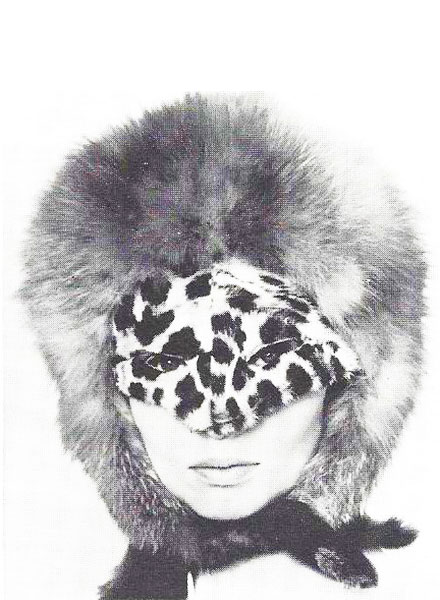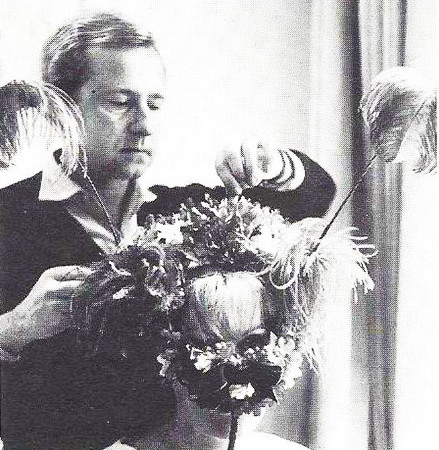
Adolfo created the cat-woman look in his 1964 collection. A leopard-skin mask and a red fox helmet made an arresting statement for winter sidewalks.
Small capitals are used to identify designers with articles of their own — for example, balenciaga in the first article. Image makers, described in a separate collection of articles between pages 2 75 and 2 92, are also identified by small capitals but an asterisk is added (thus. fairchild*) to distinguish image-makers from designers. Colour illustrations (pp 65-80, 113-128, 161-176, 241-256). Designers whose work is illustrated in colour are identified by symbol D beside their names.

Originally a Milliner, Adolfo was formed his fantasy creations. He is shown adding the finishing touches to a 1965 confection of violets and feathers.
ADOLFO, Sardina
Born Havana, Cuba, 1935. Adolfo came from a comfortable middle-class family of lawyers. Destined to join the family firm, he was lucky in that the privileged world of the wealthy pre-war Cubans included many sophisticated fashionables and one of the most elegant was his aunt, Mme Maria Lopez. Wealthy and worldly, having persuaded his family to let him out of law she took him to Paris. Her power opened the stern doors of the Maison balenciaga, who gave Adolfo an understanding of the importance of cut and line which has remained with him throughout his career. In 1948 he moved to New York to work as a milliner.

The Adolfo evening look in 1983 showed American dressing at its best: a demure collar and cuffs with a shiny palette-embroidered top, combined with a full length skirt.
He soon had a devoted following and in 1962 he opened his own fashion house, designing clothes as well as hats. His debut was highly successful and his reputation has grown. He now dresses many of those ‘wonderful women from W” (see fair-child*), including Nancy Reagan. He has won a Coty Special Award twice in his career for his millinery (1955 and 1969) and is a member of the Council of Fashion Designers of America. These accolades are a reflection of the esteenr accorded to all his clothes, be they his famous patchwork evening skirts or his ultra-c/n’r, Chanel-type suits. He is a consistently good designer, if not a great original.